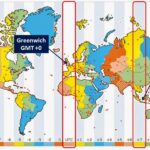In our increasingly connected world, understanding time zones is essential. Whether you’re scheduling a virtual meeting, catching an international flight, or coordinating with loved ones in different countries, knowing your time zone helps ensure that you’re right on time. A common question that people search online is, “what time time zone am I in?” This simple yet vital question opens the door to understanding how global timekeeping works, and why your location matters more than you might think.
What Are Time Zones?
Time zones are geographical regions where the same standard time is used. The Earth is divided into 24 primary time zones based on longitudinal lines, with each zone roughly 15 degrees of longitude apart. These zones were created to standardize timekeeping, making it easier for people and institutions to communicate and operate across distances.
Why Do Time Zones Exist?
Before what time time zone am i in, each town kept its own local time, based on the sun’s position in the sky. This caused confusion, especially with the development of railways and cross-country travel. In 1884, the International Meridian Conference established a prime meridian in Greenwich, England, and divided the world into time zones from there. This marked the beginning of modern timekeeping as we know it today.
Greenwich Mean Time and UTC
Greenwich Mean Time (GMT) was the first universal time standard. Today, Coordinated Universal Time (UTC) has taken its place as the international time standard. All time zones are measured in relation to UTC. For example, New York is in the Eastern Time Zone, which is UTC -5 during standard time and UTC -4 during daylight saving time.
Daylight Saving Time (DST)
Many countries adjust their clocks forward in the spring and back in the fall to make better use of daylight. This is known as Daylight Saving Time. Not all countries or even all regions within a country observe DST, which can make figuring out your time zone even trickier.
Automatic Time Zone Detection
Most smartphones, computers, and modern digital devices can detect your time zone automatically. This is done using GPS, Wi-Fi signals, and your internet connection. When you travel, your phone typically adjusts itself to the new local time without you having to lift a finger.
Manual Time Zone Checking
If you’re wondering “what time time zone am I in” and prefer not to rely on technology, there are other methods. You can check maps that display time zone divisions, or use websites like timeanddate.com or worldtimebuddy.com. These platforms allow you to enter your city or coordinates and instantly see your time zone and local time.
Time Zone by Country and Region
Every country is assigned one or more time zones. Larger countries like the United States, Russia, and Australia span multiple time zones. Smaller countries often lie within a single time zone. Below are a few examples:
- United States: UTC -5 to UTC -10 (plus UTC -4 for territories)
- United Kingdom: UTC +0 (GMT) or UTC +1 during DST
- India: UTC +5:30 (IST – Indian Standard Time)
- Japan: UTC +9 (JST – Japan Standard Time)
Scheduling Across Time Zones
One of the most common reasons to ask “what time time zone am I in” is when scheduling events with people in different locations. Miscommunication due to time zone differences can lead to missed meetings, late phone calls, or worse missed opportunities.
Travel and Jet Lag
When you travel across time zones, your body’s internal clock can become misaligned with the local time. This phenomenon, known as jet lag, can affect sleep, mood, and overall functioning. Knowing your current time zone helps you adapt faster and ease the transition.
Work and Remote Collaboration
As remote work becomes more common, people from different parts of the world collaborate in real time. Understanding your own time zone and those of your colleagues ensures smooth communication, reduced stress, and effective productivity.
Half-Hour and Quarter-Hour Time Zones
Not all time zones follow the full-hour rule. Some regions operate on half-hour or quarter-hour time differences. For instance:
- India (IST): UTC +5:30
- Nepal: UTC +5:45
- Newfoundland (Canada): UTC -3:30
These unique offsets can cause confusion, especially if you’re manually calculating time differences.
Countries with No Daylight Saving Time
Many countries do not observe DST at all. For example:
China: Uses a single time zone (UTC +8) across its entire territory.
India: Does not observe DST.
Most of Africa: Does not follow daylight saving time due to consistent daylight throughout the year.
Changing Time Zones
Some regions have changed their time zones for political or economic reasons. For example, Russia has changed its timekeeping system several times in recent years. Such changes can affect scheduling and time-based software applications.
Smart Devices and Operating Systems
Modern operating systems like Windows, macOS, Android, and iOS allow users to set their time zone manually or automatically. These systems use built-in databases that stay updated to reflect changes in global time zones.
APIs for Developers
If you’re a developer, there are APIs like Google what time time zone am i in API and World Time API that help integrate time zone detection into your applications. This ensures that users across the globe can interact with your platform in their local time.
What If You Don’t Know Your Time Zone?
If you’re still wondering “what time time zone am I in,” don’t worry. Here are simple steps to find out quickly:
Use Google Search: Just type “what is my time zone” into Google, and it will show you the answer based on your IP address.
Check System Settings: Go into your device’s date and time settings to see your current time zone.
Use a Time Zone Website: Sites like time.is or worldclock.com provide instant results based on your location.
Personal Convenience
Knowing your time zone ensures that your devices display the correct local time. This helps you stay punctual, manage reminders, and avoid unnecessary confusion in your personal life.
Business and Professional Use
In business, time is money. When your schedule aligns with your time zone and those of others, it prevents miscommunication, late meetings, or missed deadlines. It’s especially important in industries like customer service, tech support, logistics, and global marketing.
Security and Compliance
Certain industries require accurate timekeeping for security and regulatory compliance. Financial transactions, legal documentation, and health records often include timestamps that must align with the correct time zone.
Conclusion
The question “what time time zone am I in” may seem basic, but its implications reach far and wide. From scheduling meetings to traveling across continents, understanding your time zone is vital in today’s fast-paced, interconnected world. Thankfully, with technology at our fingertips, determining your current time zone has never been easier. Whether you’re using a smartphone, computer, or an online converter, you can always stay in sync with the world around you. So next what time time zone am i in you wonder what your time zone is, you’ll know exactly how to find out and why it matters.



